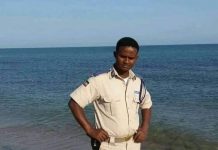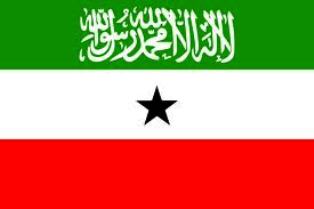Somaliland was amongst the seventeen African countries that attained their independence in 1960, “The Year of Africa.”.
“A former Italian colony, Somalia merged on the day it became independent with the former British protectorate of Somaliland in 1960 to form the Somali Republic. Somaliland had itself gained its full sovereignty five days earlier. The objective was to reconstitute the “Greater Somalia” of the pre-colonial era, which had included Kenya, Ethiopia, and the future Djibouti, which was at that time under French control” (Chiwanza, 2017).
 Unfortunately, Somalilanders did not get a chance to fully enjoy their newfound independence on June 26, 1960, but instead they found themselves empty handed soon after the merger with, then former Italian colony, Somalia.
Unfortunately, Somalilanders did not get a chance to fully enjoy their newfound independence on June 26, 1960, but instead they found themselves empty handed soon after the merger with, then former Italian colony, Somalia.
“…The newly unified Somali Republic’s parliament promptly created a new Act of Union for all of Somalia, but this new Act was widely rejected in the former State of Somaliland. Regardless, the southern-dominated parliament ordered a referendum in the entire country to confirm the Act of Union. Much of the north’s population boycotted the referendum, and just 100,000 northerners voted at all. Of these, over 60% of those were against the union under the new Act” (“1961 revolt in Somalia”, 2019).
A year after the merger of the two independent nations Somaliland and Somalia, a group of young army officers from Somaliland who realized that the union was a hoax decided to restore their lost independence in December, 1961. Although, they did not succeed in the attempted coup, it was the beginning of a long evolving struggle of Somalilanders to win back their country and reclaim their independence once again.
After the failed coup, the struggle continued and evolved into different forms of resistance through the years following the union.
After the civilian government was over thrown in October, 1969 by the late military dictator Siad Bare, he immediately imposed new repression tactics against Somalilanders. These repression tactics were systematic in nature and were designed to break the Somalilanders spirit, deprive economical gains, weaken their educational achievements, and removing top senior government officials by replacing them with unqualified, loyal individuals and members of his tribe.
The former dictator denied commercial license permits and revoked existing ones from traders and business community. The higher education medium of instruction was in Italian, therefore, students from Somaliland were `obligated to learn a new language ( Italian) after they graduate from high school in order continue college education. There was no single college in Somaliland in three decades during the union with the former Italian colony. Intimidations, detentions, and harassments of Somaliland intellectuals and artists were common. Yet, the resistance continued and assumed a different form in early 70s spearheaded by artists through public awareness by creating plays and composing poems carrying messages against the brutal dictator. These talented brave men were subjected to routine detentions without trials and were kept in jail for decades.
Among these talented and selfless intellectuals and artists who put their lives on the line to educate their fellow Somalis were the following legends, Mohamed Ibrahim Hadrawi, Abdi Aadan Haad (Qays), the late Mohamed Haashi Dhama (Gaariye) and other many brave men and women.
The revolt that started in 1961 by young junior officers continued in different forms through out the years, however, in the beginning of 80s it morphed into another form of armed struggle and the “Somali National Movement” (SNM) was formed in April 6. 1981 in London and eventually established their armed unit inside Ethiopia. SNM consisted of two integral and collaborative parts based on skillset and subject matter expertise. This division of labor between armed unit and top political executives made problem solving and addressing complex issues much easier.
The top military brass command officers had the advantage of having lead a real wartime experience in the Ethiopia/Somalia war of 1977 in which they were successful in defeating the most powerful Ethiopian military in very short period after the engagement.
While in the process of building and enlisting fighters inside Ethiopia, they were not getting military supplies and other supportive materials from Ethiopia except the permission to operate within their borders.
During this period, Mengistu Haile Mariam of Ethiopia was having a problem of his own from Ertrean fighters, while battalions of his arm forces were protecting the Somalian/Ethiopian border. On the other side of the border Siad Bare was facing armed movements operating in Ethiopia. To quash these resistances, Mengistu and Siad Bare agreed in their meeting in Djibouti in 1988 to halt supporting the forces against them and shift their priorities. Mengistu immediately notified the leaders of SNM to wrap it up and end their fight and leave his country. This unexpected move from Ethiopia was a major below to SNM’s plans since Ethiopia served as their location of regrouping and retreat during their operations in Somalia. SNM did not have significant fighters and adequate military equipment to face the Somali National Army. SNM executives and military leaders met for few days to come up with viable resolution and where to go from there. The SNM fighters had prior number of sophisticated rescue missions including the rescue of Abdillahi Asker a fellow military officer and the break-in operation of the Mandheera prison where they rescued innocent business men, students and other political prisoners.
After intense deliberations, they decided to move forward and face head-on the ugly reality, understanding clearly that there is no where to retreat or regroup. At that moment the number of SNM fighters range from 2400-2800 equipped with light weapons, against a mighty mechanized Somali National Army, spread a long the border. To a lot of people, this seemed like a suicidal operation or a mission impossible. Yet, they marched on.
The biggest Somali military bases at that time were located in Hargeisa, now the capital of Somaliland and the second capital Burao. The SNM leaders decided, instead of engaging the Somali military on a direct combat, they decided to bypass the front line army and went straight to attack the two major bases inside.
Miraculously, the mighty military force of Somalia which had defeated the most powerful Ethiopian military within days of the armed conflict was eventually defeated and humiliated by a mere 2500-2800 fighters with no significant training and over-numbered brave men and women Somaliland fighters. Thirteen Somaliland young female fighters participated in those final direct combat missions.
Finally, they liberated their country and people from a brutal dictator and reclaimed their independence once again in May 18, 1991.
On the other hand, Somaliland just recently successfully held the seventh national election which consisted of twin elections.
By Mohamed Samater






















